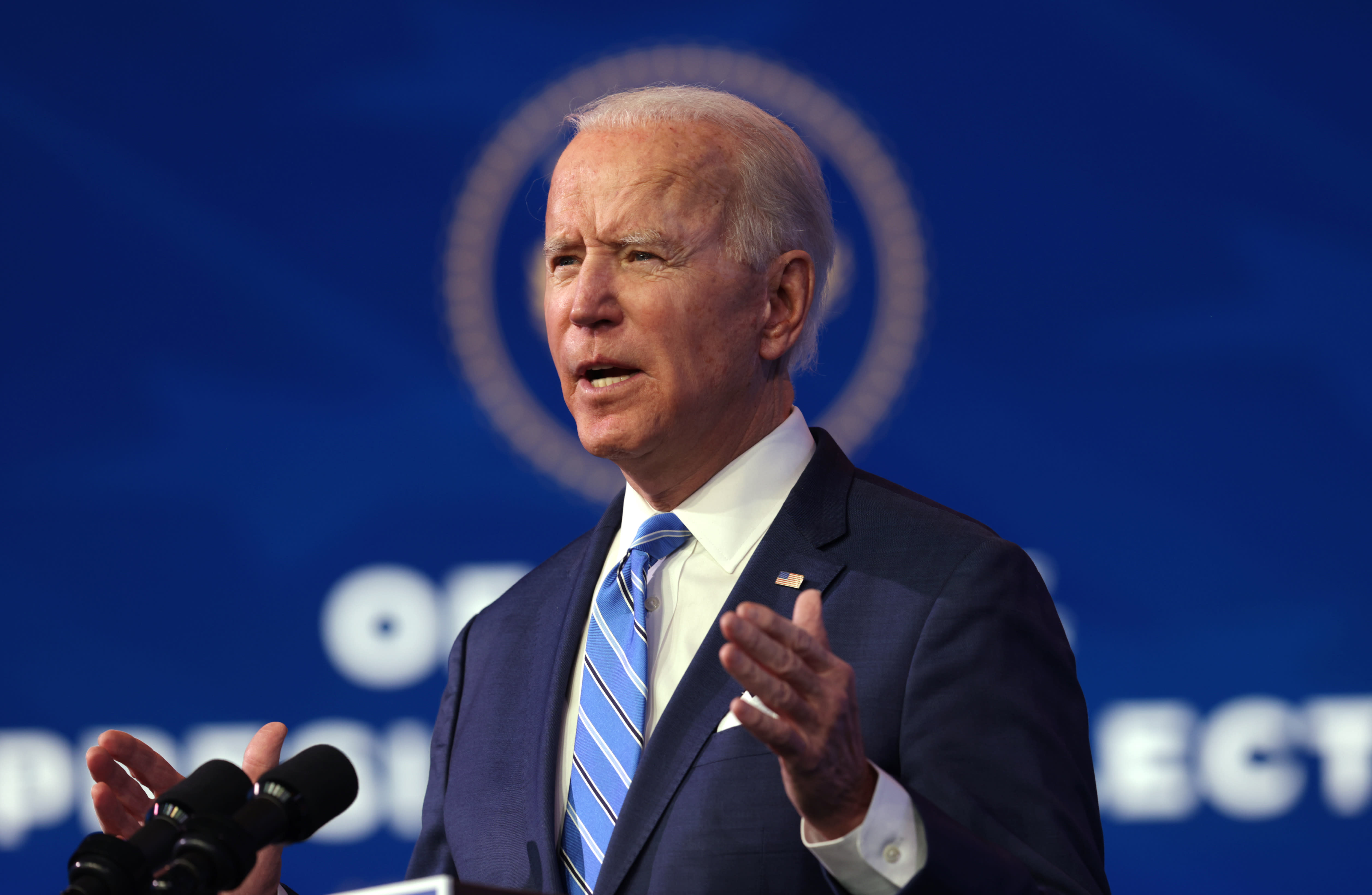
U.S. President-elect Joe Biden speaks as he lays out his plan for combating the coronavirus and jump-starting the nation’s economy at the Queen theater January 14, 2021 in Wilmington, Delaware.
Alex Wong | Getty Images
The incoming Biden administration will push Congress to expand food benefits for Americans struggling because of coronavirus until at least September 2021 or until the crisis is over.
“As I speak, 1 in 7 households in America, more than 1 in 5 Black and Latino households in America report they don’t have enough food to eat,” Biden said in a speech Thursday night in which he unveiled the details of his vision for a $1.9 trillion stimulus package. “It’s wrong, it’s tragic, it’s unnecessary.”
In addition to extending a monthly increase in the Supplemental Nutrition Assistance Program, or SNAP, benefits, the president-elect is also calling for another $3 billion to help mothers and their children access food in the pandemic as well as an initiative in which restaurants battered by the crisis receive help to get meals to families in need.
More From Invest in You:
It’s a tough outlook for graduates in the Class of 2020
Many college graduates are relying on unemployment to pay the bills
Internships canceled? College students must get creative and adapt
While Biden’s proposals still have to pass Congress, a $900 billion stimulus package passed in December already made big changes to SNAP. Here’s what you need to know.
How are food stamps different in the pandemic?
The latest stimulus package passed in December allocated $13 billion for SNAP, boosting monthly benefits by 15% for all recipients until June 2021. Biden is calling to extend that increase until at least September 2021 or for as long as the pandemic lasts.
That amounts to around $25 more per person, per month, said Lisa Davis, the senior vice president of the No Kid Hungry Campaign. A family of four will get an extra $100 a month.
The latest stimulus package also made it so that the federal unemployment boost doesn’t count toward people’s income when they apply for SNAP, making more jobless people able to qualify.
“This helps to make sure that some struggling families won’t lose food assistance because they are receiving modest unemployment benefits,” Davis said.
How do I know if I qualify?
You’ll need to apply.
Many people don’t try to access the benefit because they assume they’re ineligible or worry about the stigma, said Carrie R. Welton, director of policy at advocacy group The Hope Center for College, Community and Justice.
“People will bring their own shame into this, but these are taxpayer resources,” Welton said. “This pandemic is not anyone’s fault.”
SNAP has rules around how much you can own in assets and earn in income to qualify. But certain expenses, including your rent and childcare costs, can be deducted, Welton said. And again, the recent stimulus package excludes the federal unemployment boost from people’s income.
How do I apply?
The Center on Budget and Policy Priorities has a state-by-state guide to applying for SNAP benefits.
The Department of Agriculture, which runs the program, also has resources to get you started.
If accessing Internet is a problem right now, you can look up your state’s SNAP phone number on the DOA’s website. In many states, you can also dial 211 to apply.
How much could I get?
Under the new rules, an individual could get up to $234 a month. A family of four could get as much as $782 through June.
In some states, the maximum benefit is higher. For example, a family of four in Hawaii may receive a monthly benefit of $1,440.
The money will be sent to you each month on a EBT card, which acts like a debit card. People typically get the money in less than 30 days, but those with little to no income could get their benefits within a week.
What if I have young children at home?
The Pandemic-EBT program was created during the health crisis to provide food to families who lost access to free or reduced-price school meals. In an average month, it gives out an additional $114 per child, per month. That’s on top of regular SNAP benefits.
“This is a huge benefit increase for them,” said Lauren Bauer, a fellow in economic studies at the Brookings Institution.
A shocking number of children are facing hunger today.
Lisa Davis
senior vice president of the No Kid Hungry Campaign
The latest relief bill gives states some additional flexibilities to support the distribution of P-EBT benefits to school-age children and expands the program for children younger than 6 years old through September 2021, providing a lifeline for young children when childcare is closed.
Generally, benefits will be automatically sent to eligible children such as those already receiving free or reduced school lunch — enrollment is not required. The money will either be loaded on a previous EBT card or on a newly issued one.
“A shocking number of children are facing hunger today,” said Davis, adding that about 17 million American children didn’t have enough to eat in 2020.




